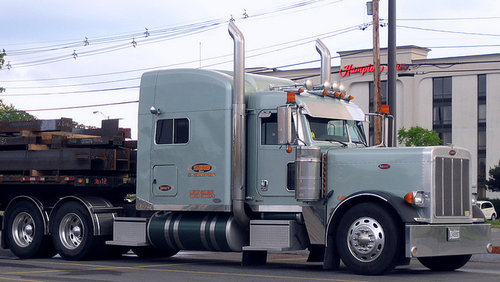5 Questions to Ask Before Building Your Own Driver Retention Tool

In the life of every business, there comes a time where you’re at a fork in the road. Where you have to choose one path over the other, and there’s no looking back or second-guessing.
Is it time to grow, or should you save money? Is the time right to expand, or should you conserve resources for later growth? Do you have to spend more on recruiting ads, or do you spend more on keeping the drivers you already have?
If you’ve been pondering that last question, the answer is obvious: an anonymous feedback tool has clear benefits for your company. But should you build the tool yourself, or does partnering with an outside vendor make more sense for your company?
If you’re on the fence about making your own driver retention tool, consider these five pressing questions before making the leap.
Do you want to divert capacity away from your core business?
You’re in the business of trucking. Everything your company does revolves around that, from drivers to dispatchers to mechanics to human resources. Chances are, there’s no one already on your team who is particularly adept at making an effective app. You excel at trucking, but it’s extremely hard to also excel at software development.
By making the commitment to create a driver engagement app, you’re diverting resources from your core business. Consider keeping your IT team focused on improving core functions of the business.
Do you have extra capital to work on this project?
If you’ve tried to hire a software developer recently, you’ve probably discovered something: they really aren’t cheap to hire. A full-time software engineer can be hired to work on your new project, but they can cost $100,000 or more per year.
Building your own tool is expensive. If you’re going to create one custom-built for your company, consider the up-front cost of hiring a team.
Who is going to review the data?
So you’ve built a driver retention tool and are collecting all sorts of information from your drivers regarding their experiences. What are you going to do with that?
Without having a dedicated person (another expense) to comb through the data and make sense of it, you’re not going to get the actionable takeaways you need from that data.
Do you have a process to close the feedback loop?
Gathering feedback is one thing, but acting on it is another one entirely. If your workers raise issues, you must either take action or give more information. If concerns are expressed but not addressed, trust will quickly be lost.
Failure to close the feedback loop—from driver to company and back—will leave drivers in a state of ambiguity. And, after all, the most toxic thing anyone can do is ask for feedback and not do anything with it.
If you’re investing in a feedback platform, ensure that it provides tools to close that loop, either individually with the driver, and/or with the fleet as a whole.
Will they really use this tool?
You could invest time, money and effort into creating the best in-house feedback tool ever seen, but it will still fail if drivers won’t use it.
Many companies struggle to gain the trust of their drivers. Whether founded or not, this lack of trust will often prevent drivers from sharing.
At WorkHound, we offer Trust-as-a-Service.
First, we keep all comments anonymous at the driver’s discretion. Once they see they have the choice whether or not to reveal their identity, they gain confidence. This confidence then breeds the trust to reveal and work with the company to address issues.
Second, WorkHound is a third party, so we have the advantage of a blank slate when asking drivers to trust us. Trust is easy to lose and extremely hard to get back. If your company struggles with trust issues, you probably need a third-party tool.
Let's Build Better Workplaces Together
Revolutionize your company culture and your worker retention rates by improving communication and engagement.
Book a Demo

